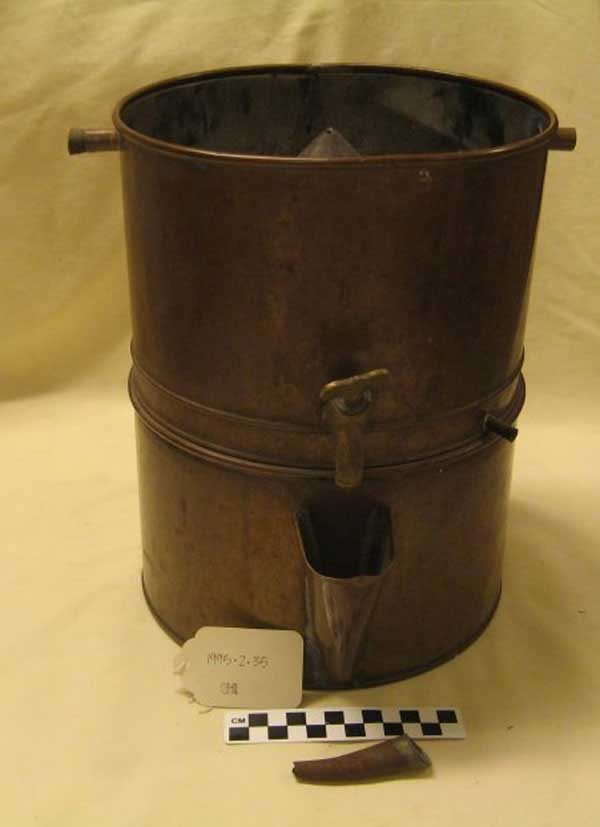During the years of national Prohibition (1920 to 1933), the entrepreneurial spirit to make spirits gripped Park City. Illegal stills abounded, producing “White Mule” – a clear liquid with a kick. Many miscreants operated in the basements and back rooms of Old Town, Empire Canyon, Richardson Flat, Thaynes Canyon, and elsewhere. According to the Park Record, a fair amount of the goods was destined for Park City’s “soft drink” parlors.
While it is easy to romanticize the era and to view the scofflaws with bemusement, white mule could be devastating, like the fentanyl-laced street drugs of our time. Park City miner Jack Beakel, for example, died in a Salt Lake City lodging house after quaffing a bad batch of the firewater in May 1923. In January 1925, miners John Pezely and Dan Ryan died after indulging in too much over the holidays.
With these admonitions behind us, here are some of the entrepreneurial antics:
September of 1920 saw Park City barber Alex Hamlin pulled over in Parley’s Canyon with three gallons of white mule in his suspiciously brand-new vehicle. His wife and children were also in the car. The Salt Lake sheriff impounded the vehicle, and Hamlin was released on $800 bail. The article does not record any family tensions that may have ensued. It does imply Hamlin was selling the whiskey through his shop. Indeed, in a prior run-in, Hamlin used the “barbers use alcohol” defense in court.
In October 1920, stills were uncovered on upper Main Street and in Empire Canyon. Both were operated by foreign nationals who were listed in the police reports as John Doe and Richard Roe. Justice O’Neil imposed the maximum fine of $299. A night later, another raid caught Gus “The King of Sweden” Nielson, who had a still “consisting of an old dirty carbide can, a coil of pipe, and a slop-bucket.”
A November 1920 raid on the Woodside Avenue home of Tony Levy uncovered a still, ten gallons of white mule, and two barrels of “dago red” – a vintage ‘wine’ of questionable provenance. The still was dismantled, the liquor confiscated, and the barrels busted open with the contents poured out.

Credit: Park City Historical Society & Museum, Roslyn Stewart Collection
One day in August 1921, Marshal St. Jeor ran into Joe McKoskey, who was suspected of having a still secreted in the surrounding hills. The marshal spotted a whiskey bottle in McKoskey’s back pocket and demanded it. This prompted McKoskey to pull his revolver and shove it in the marshal’s belly. “Throw up your hands!” McKoskey growled.
The marshal remarked cooly that he would not throw up his hands. McKoskey then demanded the marshal hand over his pistol. Again St. Jeor demurred. When McKoskey grabbed for the marshal’s pistol, St. Jeor quickly latched onto McKoskey’s right hand and pressed down. McKoskey’s revolver discharged, and the bullet crashed through the bootlegger’s knee, taking the fight out of him.
In July 1922, Olga Hrvatin, a widow with five children, was arrested for having a still and liquor on her premises. Her husband had recently died and “undoubtedly she had been persuaded to moonshine for a living.” She pled guilty and the judge only fined her $50 “because of the little ones depending on her.”
Dan Sullivan outran the sheriff when a raid in Thaynes Canyon in August 1924 uncovered his outdoor manufacturing operation. The authorities confiscated the gear and “rotting corn” mash, which made the sheriff’s office smell like a “decomposed limburger cheese joint – or worse.” Sullivan evaded capture for a day.
Denver-based federal agent made a clandestine visit to Park City in August 1925 without alerting local authorities. (Yes, at least one local cop was on the take.) The agent soon learned of a large 100-gallon still in a mill in Woodside Gulch. Only then did the agent alert the sheriff’s office and the bootleggers – George Siddoway and Vic Carlsen – were arrested.
In September 1925, a raid on a Norfolk Avenue home yielded a still, some moonshine, and fourteen barrels of precursor mash. House renter George Butterfield claimed he was just “in the employ of someone else,” but the article does not shed further light. The article did happen to mention the landlord, Frank Lake, so readers could take the hint.
One November 1926 day, John D. McDermont was caught in the act of passing moonshine to prisoners in the jail. The unlicensed catering cost him $75 in fines.
As mentioned above, these are the moonshiners who got caught. History shrouds the myriad stories of those who escaped the law’s attention!
The Park City Museum is hosting a lecture titled “Behind the Bars and Booze of Park City” given by High West Distillery co-founder Jane Perkins on Wednesday, July 24 from 5-6 p.m. at the Museum’s Education and Collections Center located at 2079 Sidewinder Drive. Michael O’Malley and Utah Open Lands’ Wendy Fisher will lead a hike for the Museum overlooking the 45th Star Conservation Easement on August 14. You must be a Museum member to sign up for the hike.